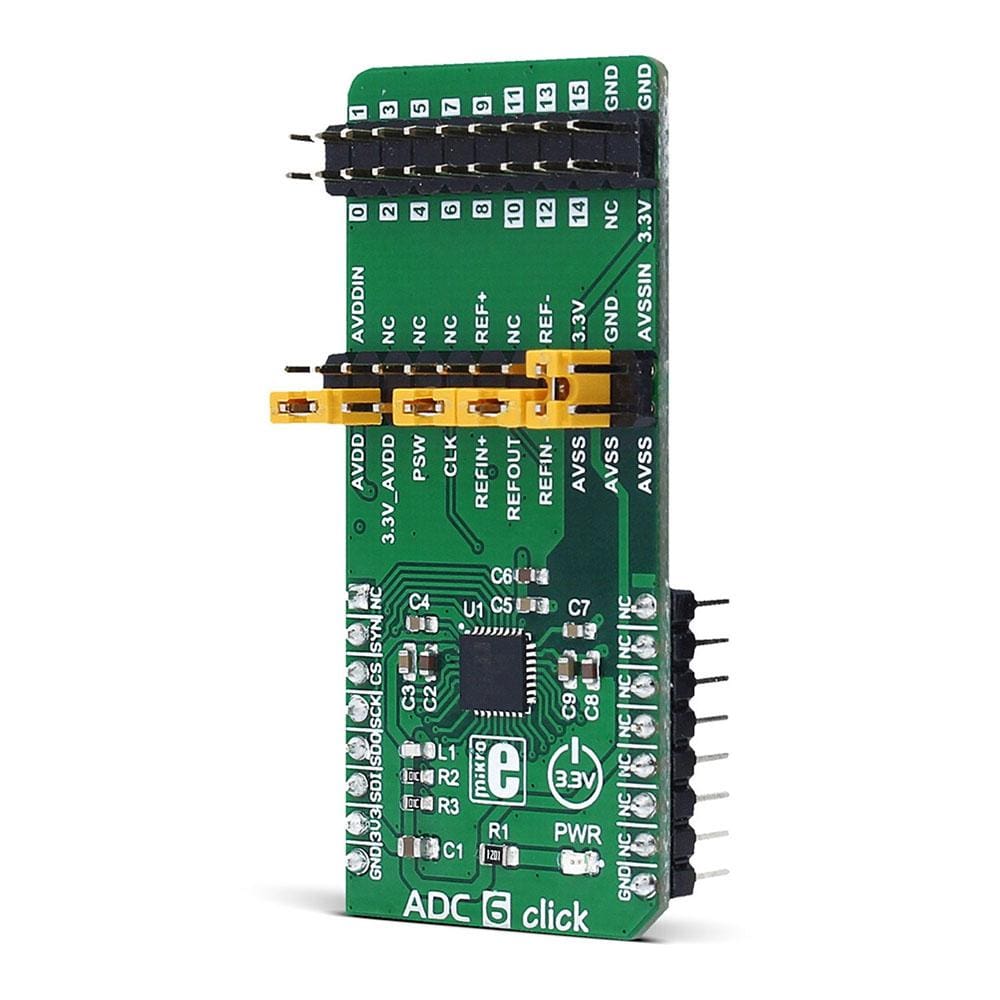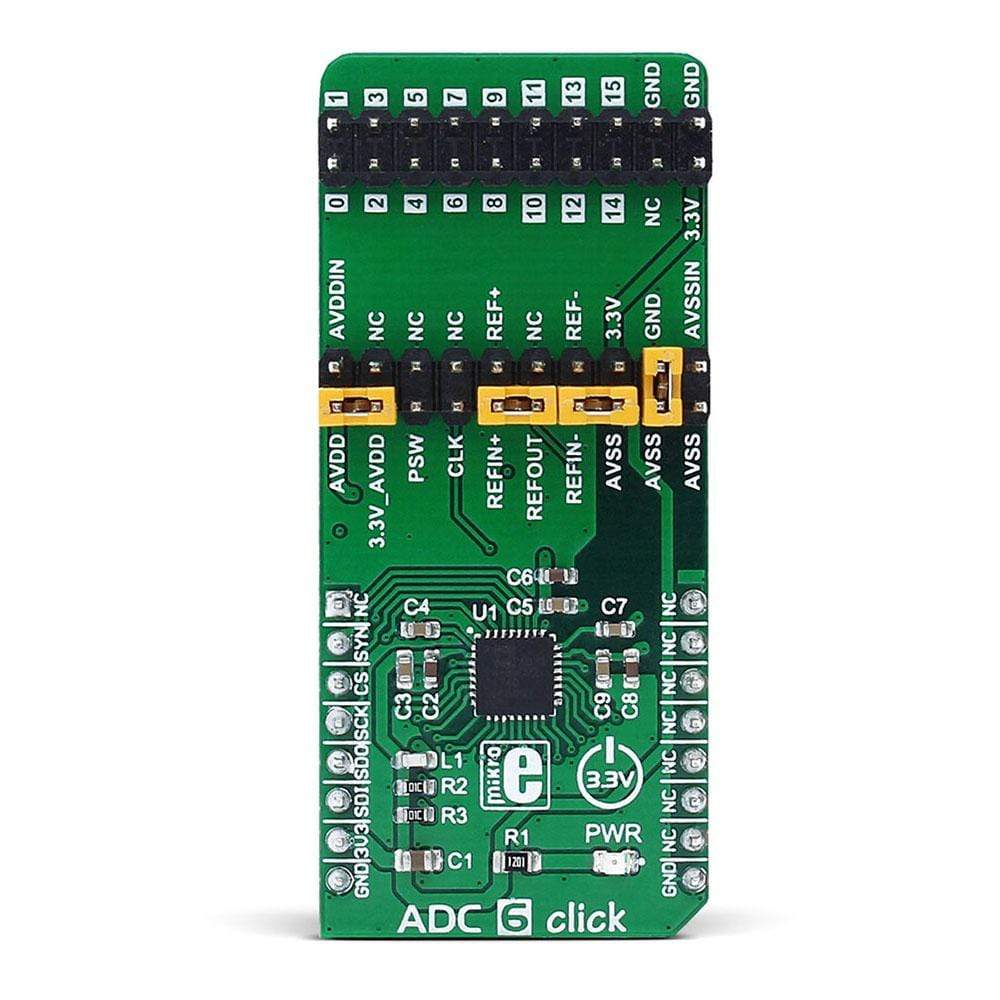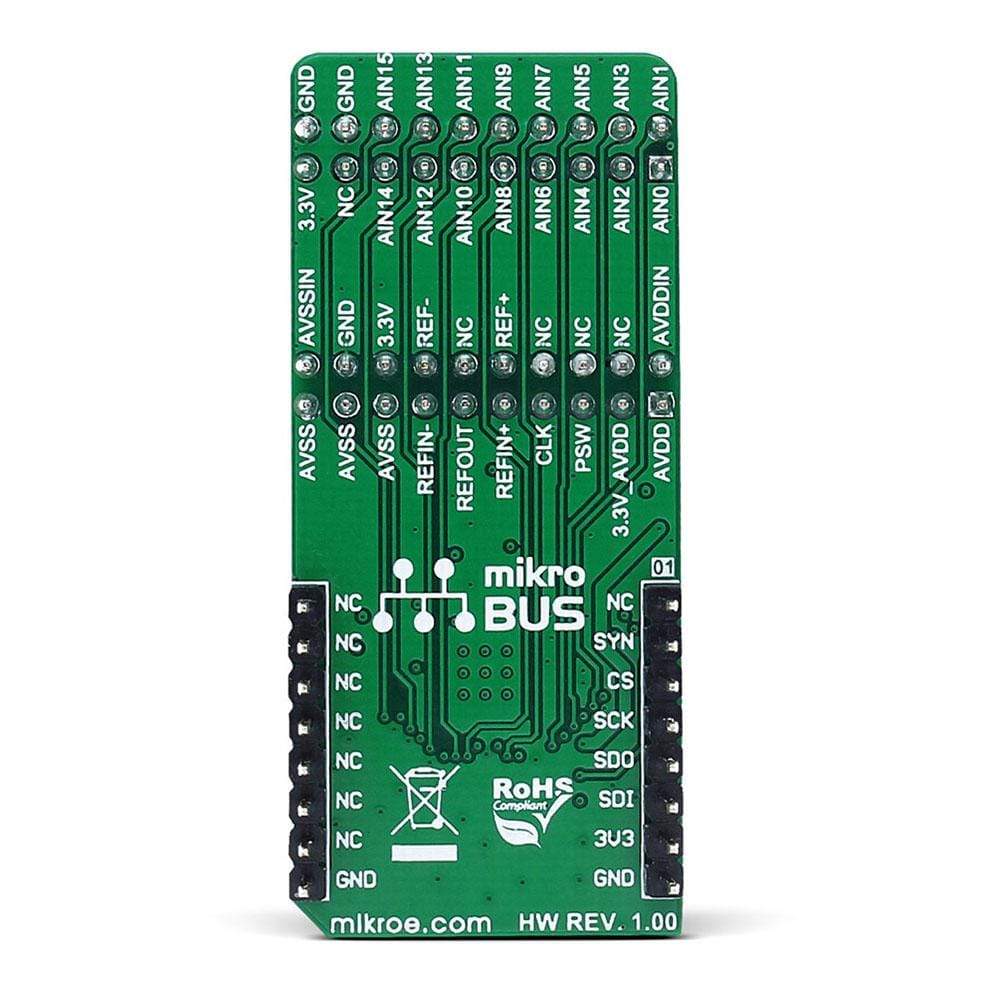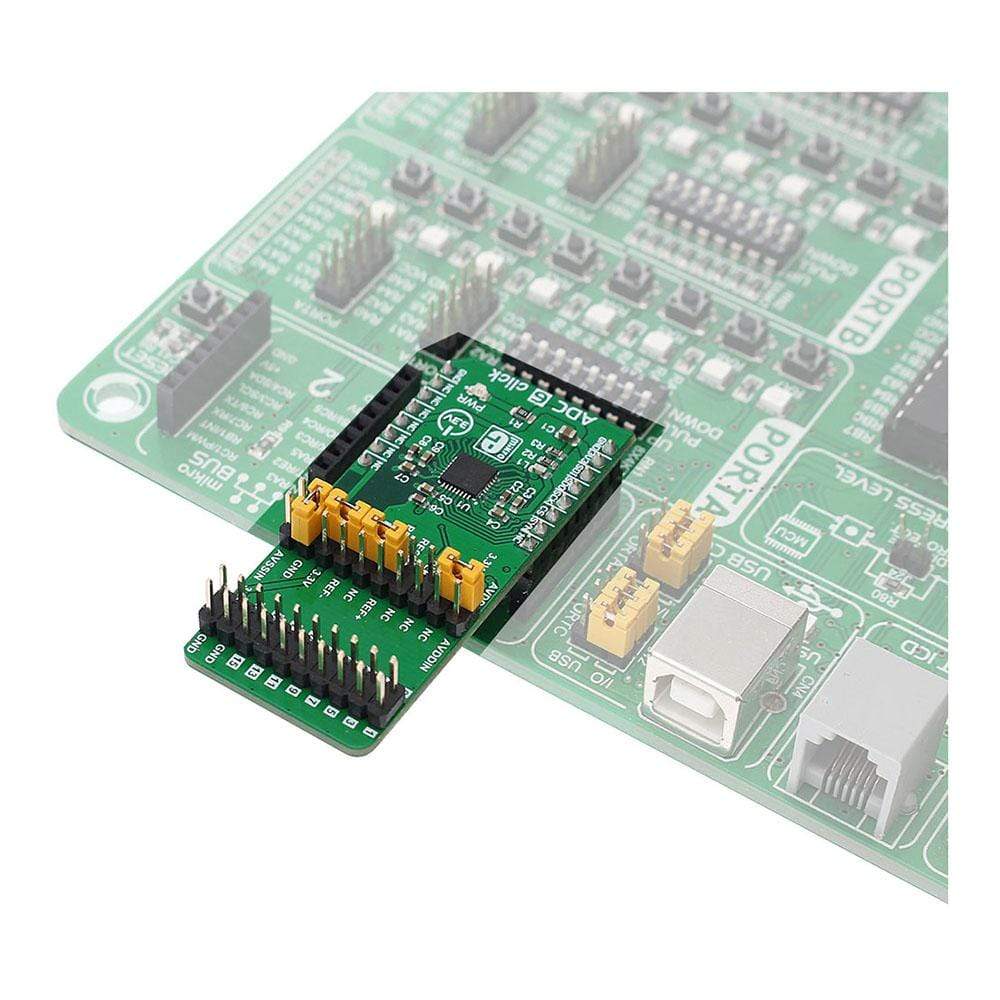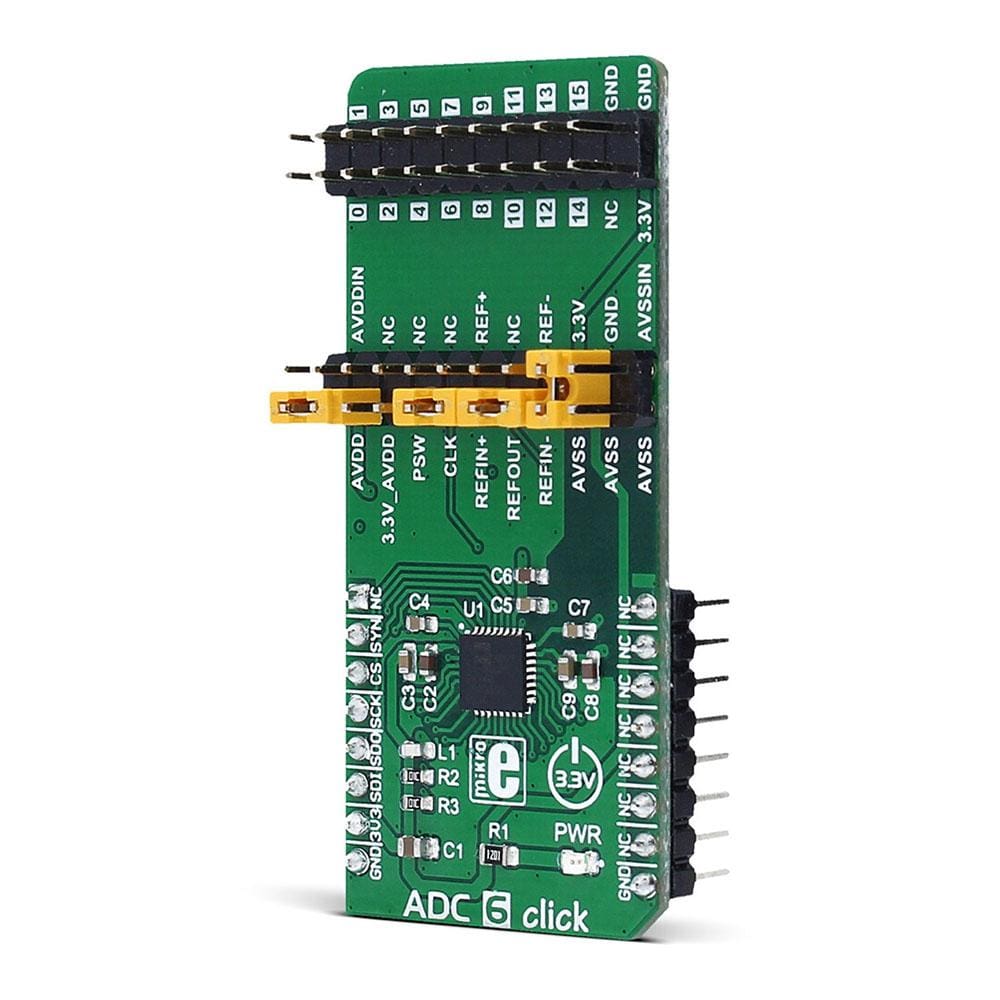
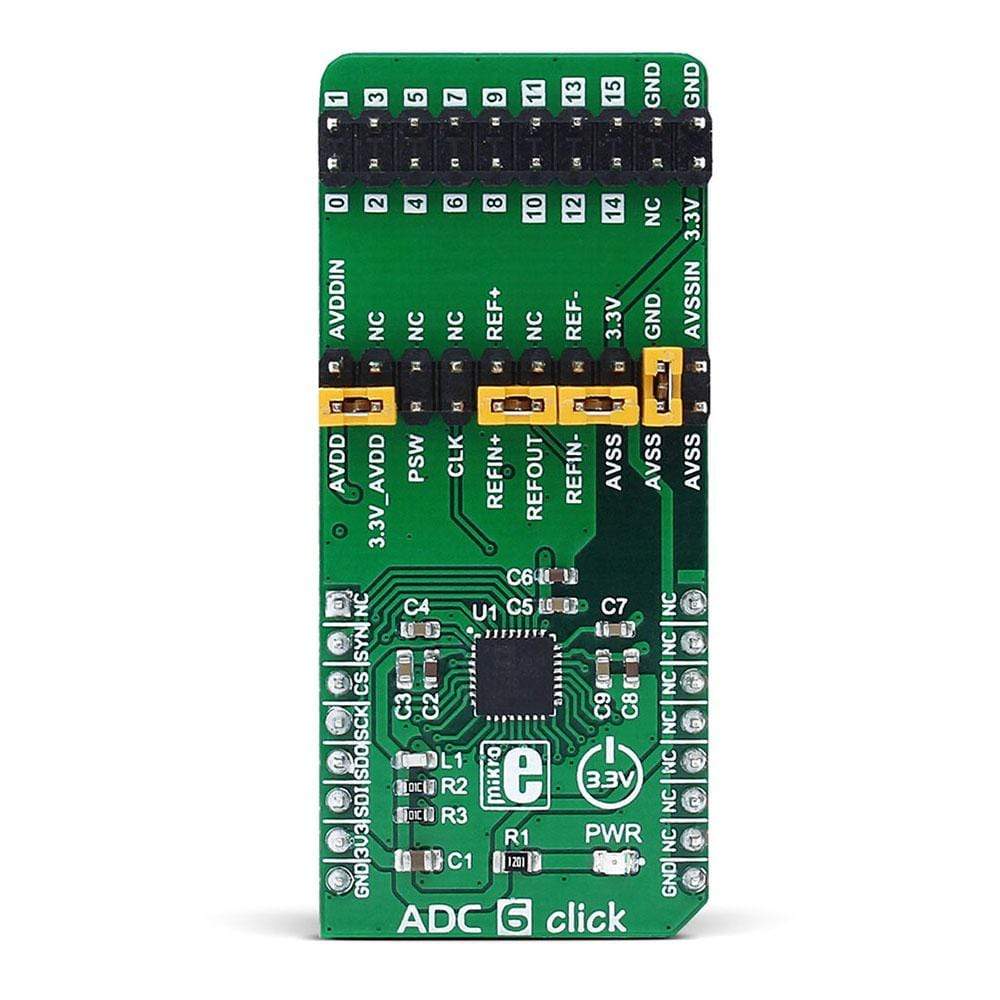
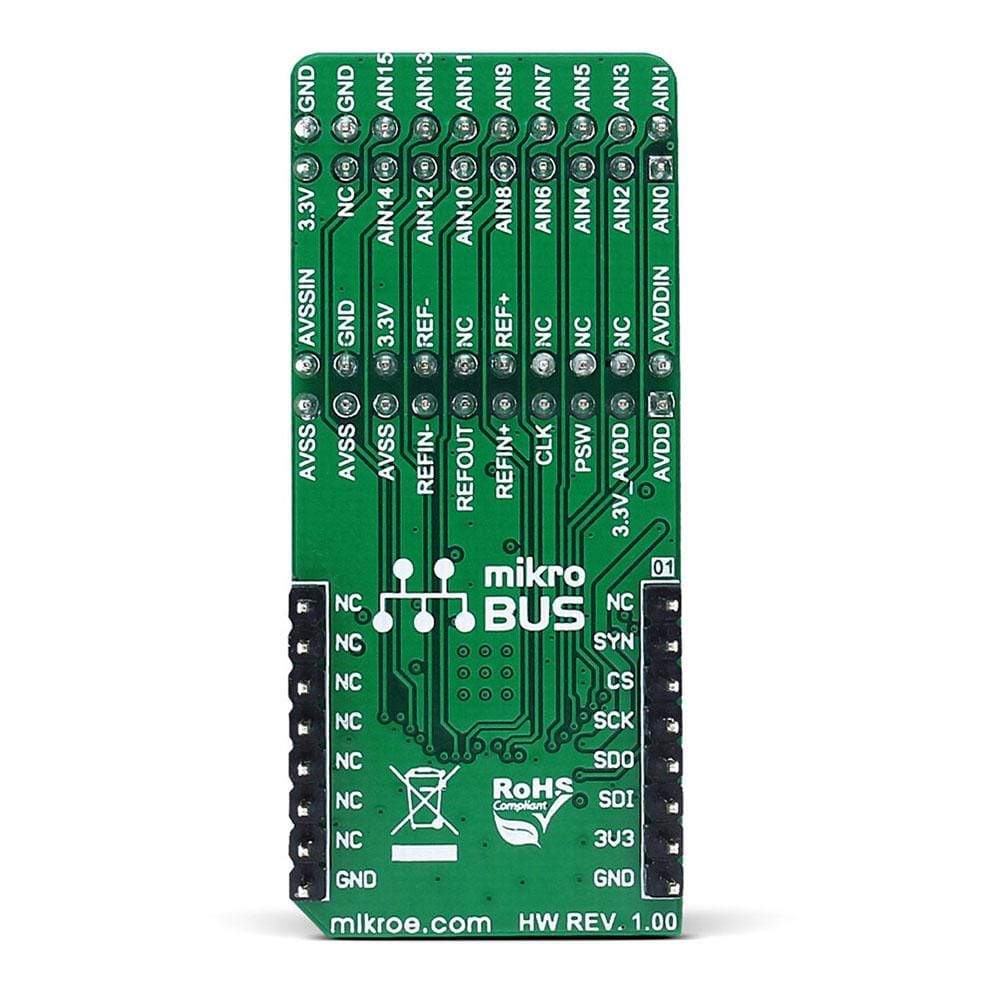
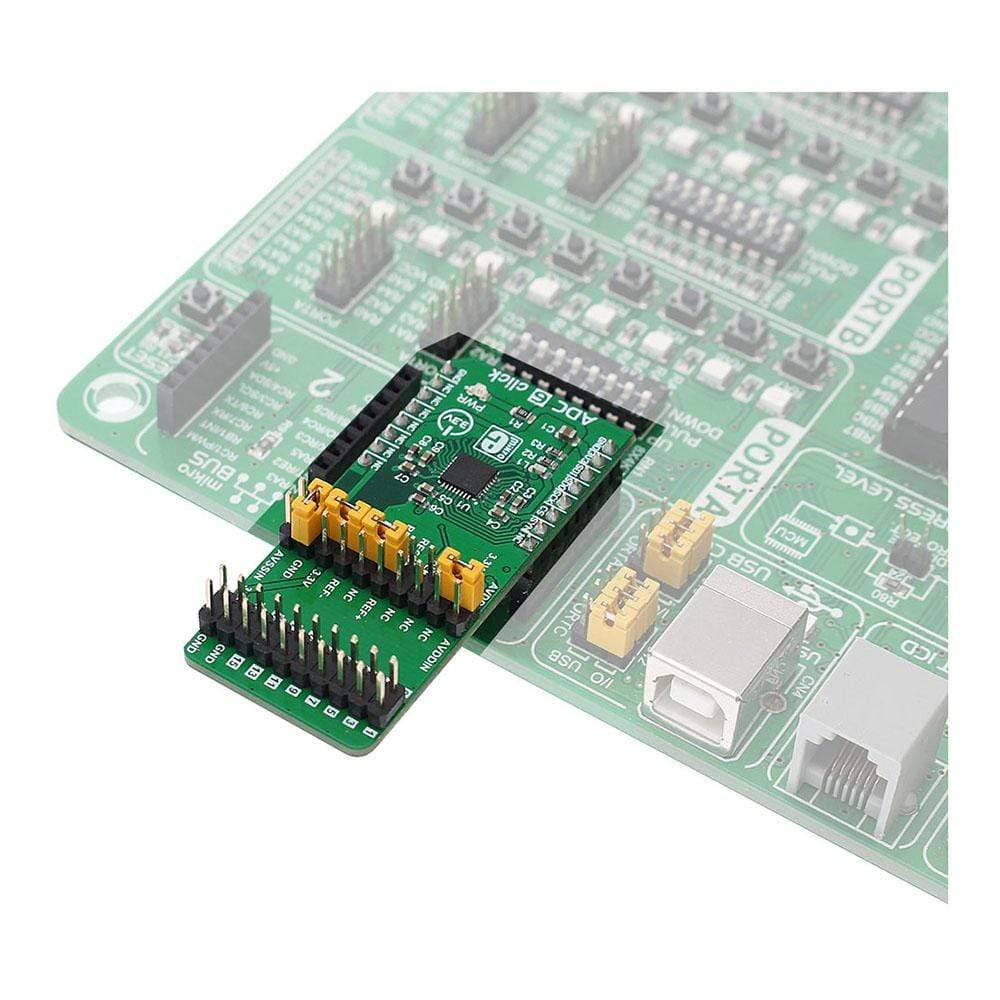
Key Features
Overview
The ADC 6 Click Board™ is an advanced 24-bit multi-channel analogue to digital converter (ADC), with 8 fully differential or 15 single-ended/pseudo differential sampling inputs, and very flexible routing capabilities. The Click Board™ has two 2x10 pin headers, used both to configure the device and connect the input channels. This allows for unrestrained configuration of the device, so it can use both bipolar and unipolar input sources, with selectable reference voltages, external clock, auxiliary power switch, and more.
Downloads
Das ADC 6 Click Board™ ist ein fortschrittlicher 24-Bit-Mehrkanal-Analog-Digital-Wandler (ADC) mit 8 vollständig differenziellen oder 15 unsymmetrischen/pseudodifferenziellen Abtasteingängen und sehr flexiblen Routing-Funktionen. Das Click Board™ verfügt über zwei 2x10-polige Stiftleisten, die sowohl zum Konfigurieren des Geräts als auch zum Verbinden der Eingangskanäle verwendet werden. Dies ermöglicht eine uneingeschränkte Konfiguration des Geräts, sodass es sowohl bipolare als auch unipolare Eingangsquellen mit wählbaren Referenzspannungen, externem Takt, Hilfsnetzschalter und mehr verwenden kann.
| General Information | |
|---|---|
Part Number (SKU) |
MIKROE-2932
|
Manufacturer |
|
| Physical and Mechanical | |
Weight |
0.023 kg
|
| Other | |
Country of Origin |
|
HS Code Customs Tariff code
|
|
EAN |
8606018712526
|
Warranty |
|
Frequently Asked Questions
Have a Question?
Be the first to ask a question about this.

